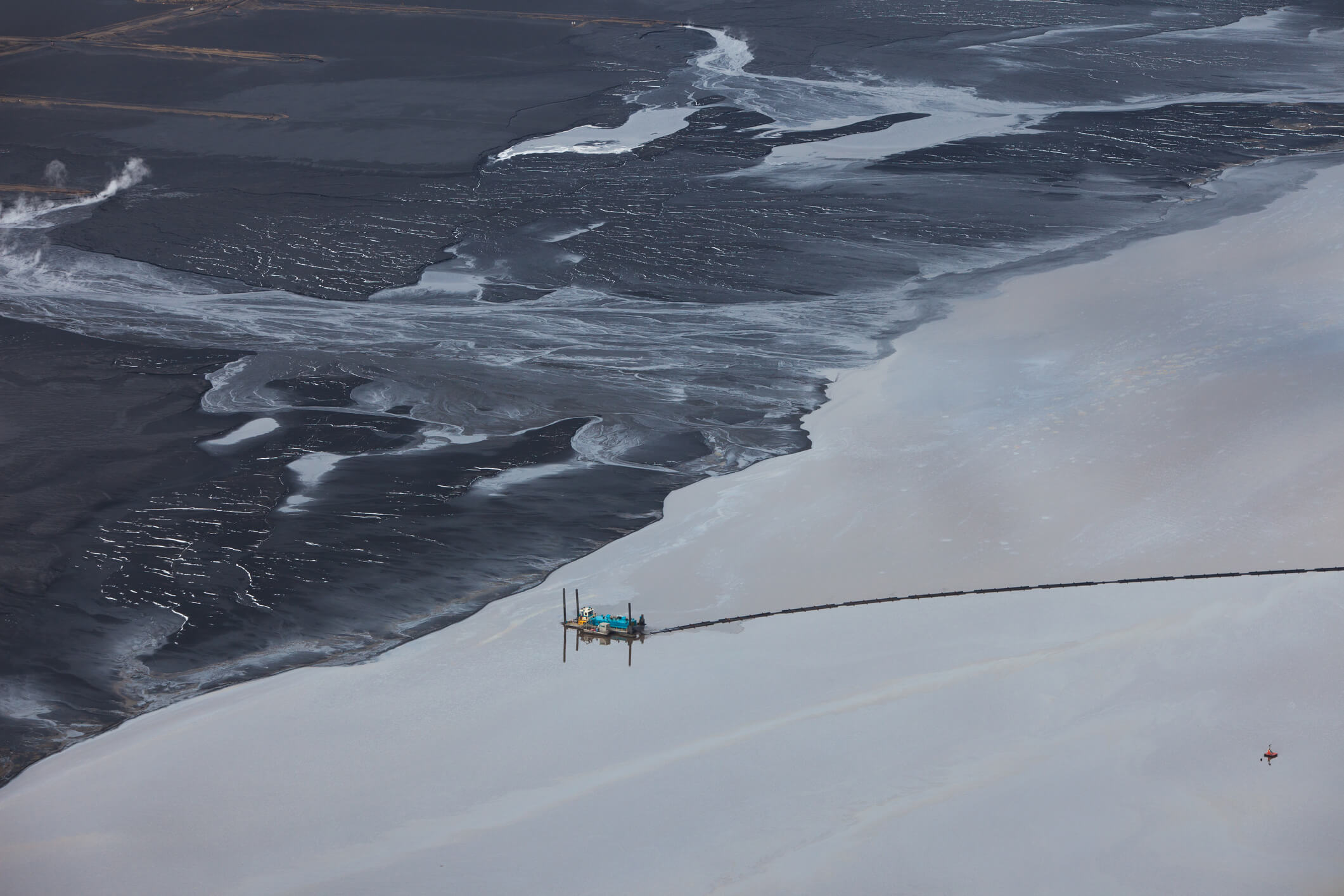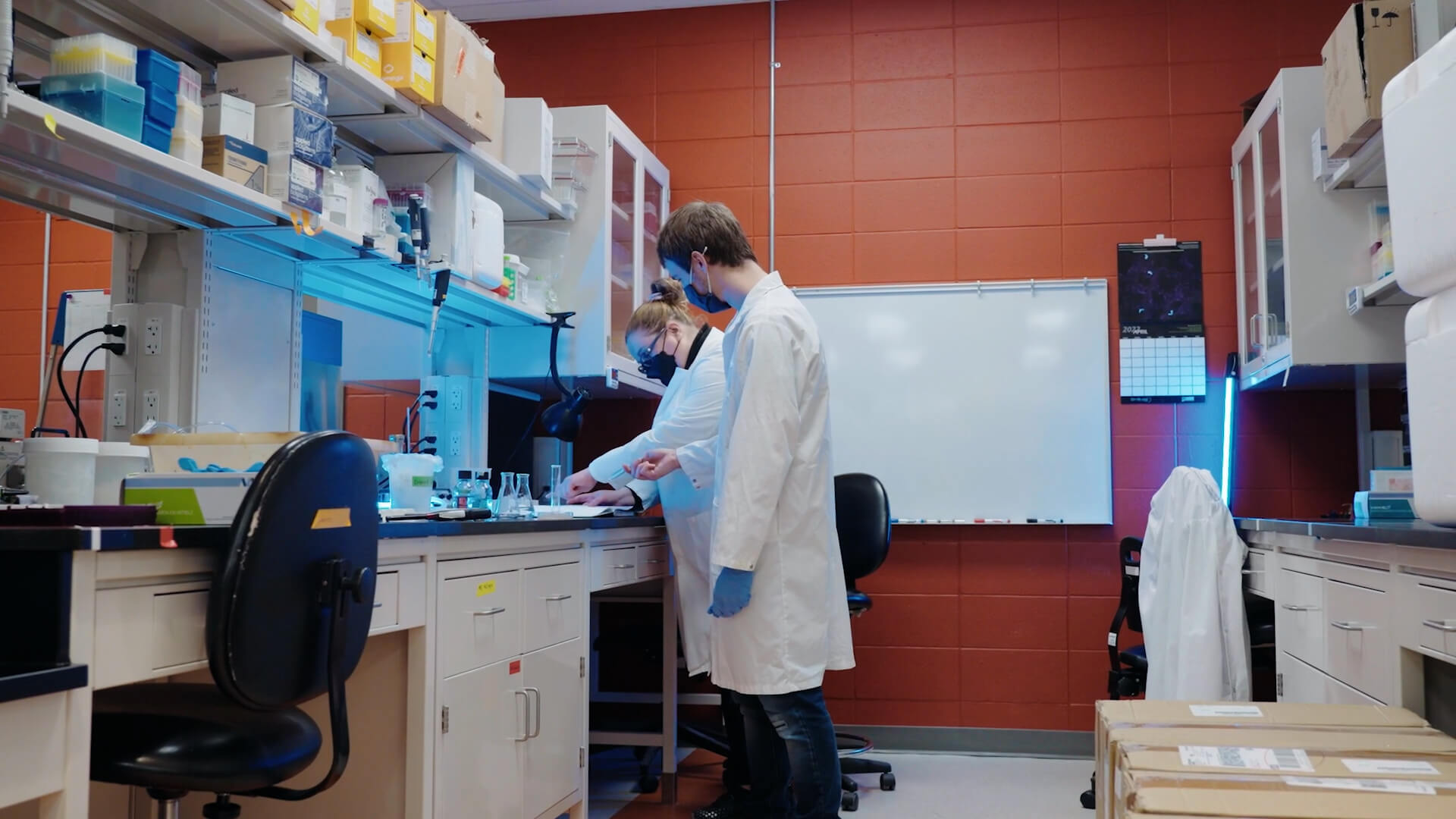What if we could engineer microbes to perform tasks that make our lives better, like monitoring water for pollutants? It sounds like something out of a science-fiction story, but that's exactly the kind of groundbreaking work one Athabasca University researcher is doing.

Dr. Shawn Lewenza, an associate professor in the Faculty of Science and Technology, is working on a better way to engineer microorganisms to help address some of the environmental challenges that result from oilsands mining.
His current work focuses on studying bacteria in tailings areas-where water used in the oilsands extraction process is stored for reuse. Lewenza is designing bacterial biosensors that quickly detect naphthenic acids, which are known to cause toxicity to some aquatic species. These biosensors are bacteria that have been engineered to produce light, known as bioluminescence, when exposed to low concentrations of pollutants.
"My mission is to put microbes to work in helping to solve big problems like antibiotic resistance and environmental pollution," he said. "This biotechnology is simple, powerful, and will help overcome many of the current limitations in environmental monitoring and wastewater treatment challenges arising from oilsands mining."
Lewenza said he sees the potential for biosensor technology to help monitor water for the presence of toxic compounds, including in the field. This technology could support the long-term monitoring of ground, river, and tailings water.
My mission is to put microbes to work in helping to solve big problems like antibiotic resistance and environmental pollution.
Dr. Shawn Lewenza, Associate Professor, Athabasca University
What are the challenges with oilsands?
Oil and gas development is a major economic driver in many jurisdictions, including in Alberta where the Athabasca oilsands region is located. Its product is the energy we use to fuel nearly all aspects of our day-to-day lives.
But despite the benefits of this type of development, it comes with drawbacks. In particular, the water used in oilsands-extraction processes will end up accumulating toxic compounds, including naphthenic acids due to the extensive reuse during operations. Lewenza said estimates vary, but the amount of tailings water in Alberta alone is typically estimated at more than 1 trillion litres. This is equivalent to more than 400,000 Olympic-size swimming pools.
Until the water is treated and safe, it can't go back into the river-the Athabasca River in the case of Canada's largest oil sands development area in northeastern Alberta.
Lewenza explained naphthenic acids are naturally occurring in oilsands; when extracting the bitumen from the sand they become concentrated in the water that is used in the extraction process.
"They're a key priority of the oilsands industry to work on and to consider treatment for," he said. "So for the water stored in the tailings areas, there is bioremediation happening in situ, but it doesn't happen at an ideal rate. And it only goes so far. They ultimately need to treat the water to return to the Athabasca River."

Cleaning the water
Lewenza's other research focuses on infectious diseases microbiology, but he shifted his focus to this broader environmental problem when he started working at AU about seven years ago. The opportunity to help solve some of the environmental problems associated with mining was attractive, he said.
"There's a lot of oilsands microbiology been going on for decades, but not in the kind of genomics or synthetic biology way that we're using, which is now becoming more common," he said. "Applying those sorts of genomics approaches into the area of water testing brings some novelty. And there's a lot of interest in microbiology by oil and gas and industry."
Ultimately, if researchers can identify bacteria that naturally break down organic compounds in tailings water, it makes the process of treating it faster and more effective. This can reduce the environmental impact of oilsands mining, but also any mining or resource extraction activities that generate wastewater.
Lewenza said there are two specific ways biosensors can help in this process. First, they can be useful for testing and monitoring the levels of naphthenic acids in water. Current testing processes can be time-consuming and expensive, whereas his engineered biosensors can be used to provide a rapid, simple, and inexpensive test that is complementary to conventional methods.
The other way biosensors could be helpful is in determining the effectiveness of diverse types of bacteria that can naturally break down naphthenic acids. Biosensors can provide a way to quickly assess thousands of bacterial isolates in the lab to isolate those microbes that are more efficient in breaking down naphthenic acids. This would help researchers identify the specific bioremediation genes employed by microbes.
There's a lot of interest in microbiology by oil and gas and industry.
Dr. Shawn Lewenza

Recent grant-funded project
Lewenza is one of the recipients of a recent $6.3-million grant from Genome Canada. He was awarded $142,000 of the grant for his work, which represents just one component of the project that includes microbiologists, plant and wetland biologists, and industry scientists using genomic methods to understand how plants and bacteria degrade naphthenic acids.
The overall goal of the project is to develop efficient, passive, and cost-effective ways to treat the large volumes of water in oil sands tailings areas. For Lewenza, the grant will help support his efforts to develop new biosensors and to test his biosensor biotechnology to monitor water purity in a pilot wetland treatment process.
"Working with a large collaborative team will generate significant advances in developing the constructed wetland treatments systems for use in cleaning up this environmental contamination in northern Alberta," he said.
Research with Reach
Lewenza was also featured in AU's new video series, Research with Reach. Watch below or check out the entire series.